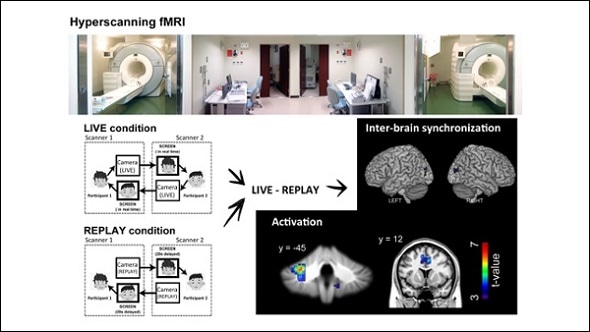Eye contact between two individuals simultaneously activates the same areas of each person’s brain, according to a neuroimaging study of human adult pairs published in eNeuro. The research emphasizes real-time eye contact as the basis for effective social interaction.

Norihiro Sadato and colleagues used a technique called hyperscanning functional magnetic resonance (fMRI) imaging to observe two people as they gazed into their partner’s eyes. A video camera and screen in each person’s fMRI scanner allowed the researchers to compare brain activity during this social task in real-time or with a 20-second delay.
The live condition was associated with a mutual influence between the partners’ eye-blinks, increased activation of the cerebellum, and enhanced connectivity within the limbic mirror system. These behavioral and neural findings suggest real-time eye contact prepares the social brain for sharing mental states with others. This study also represents an advance over previous eye-contact research involving single participants.